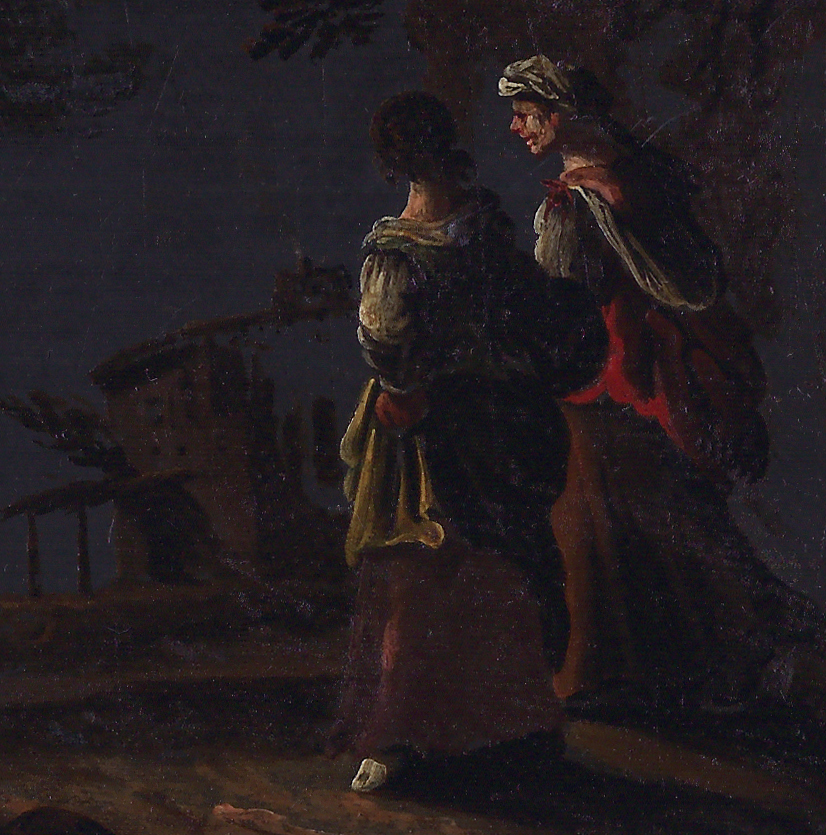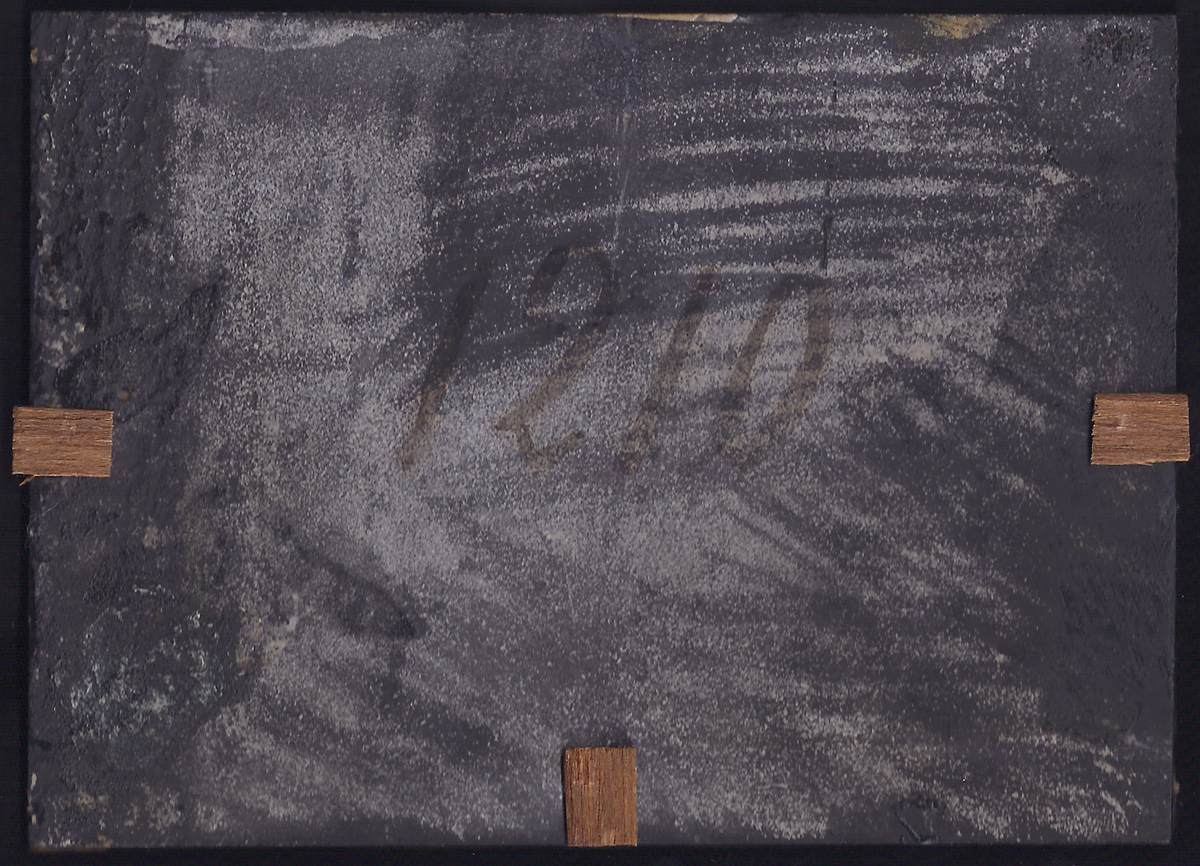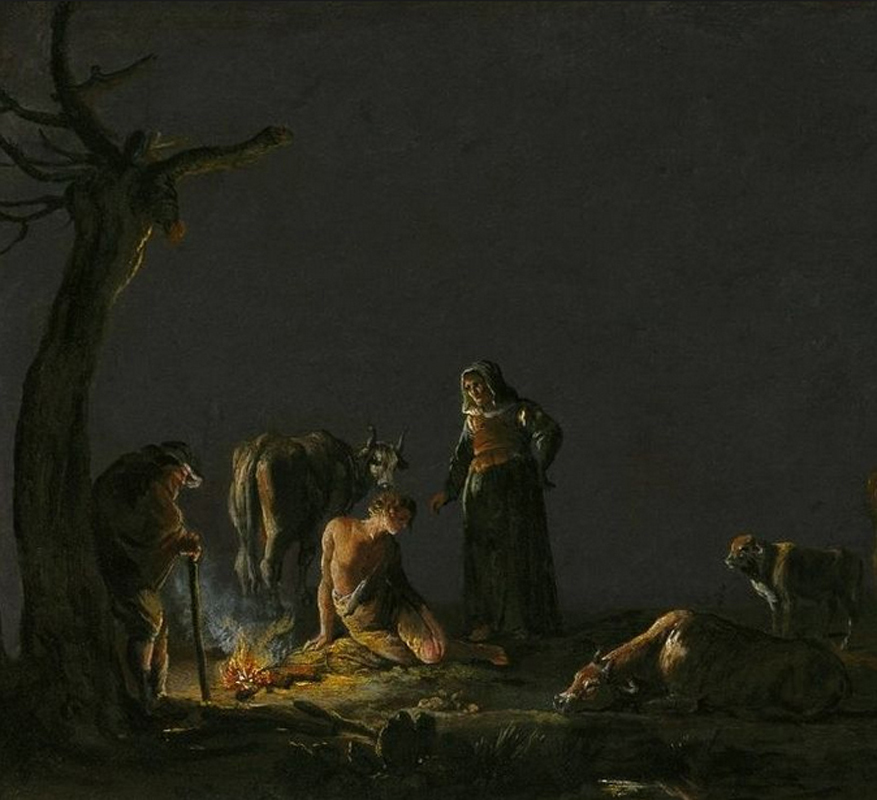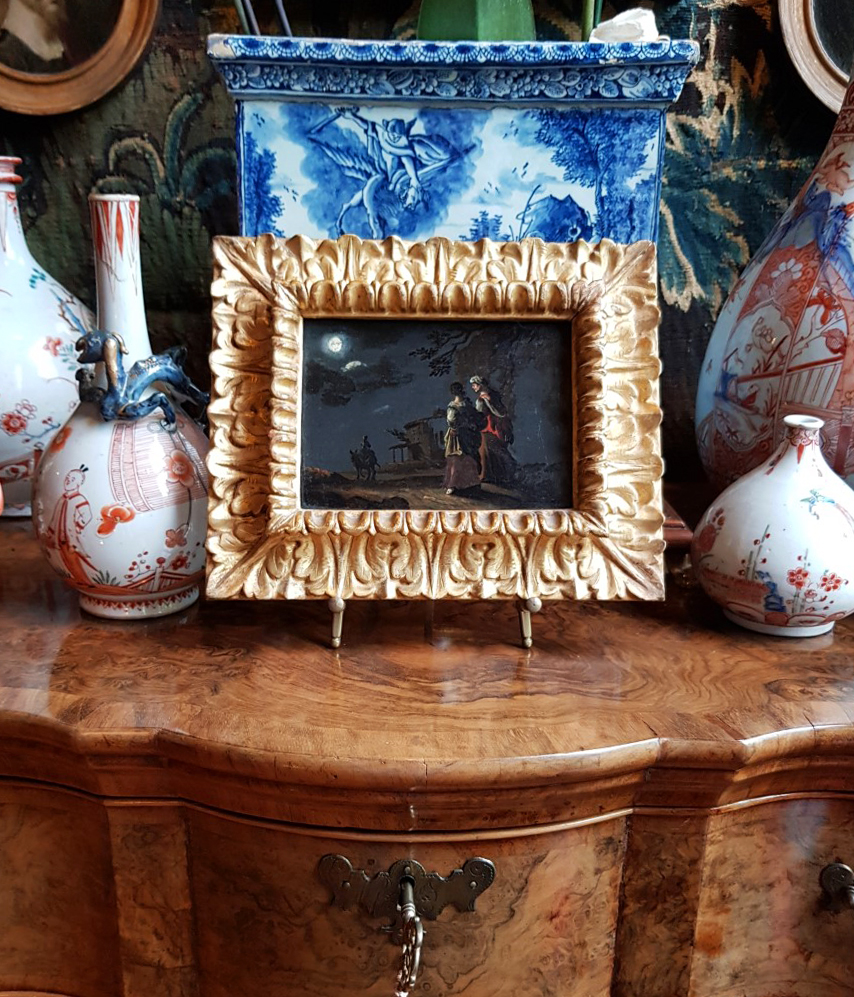LEONAERT BRAMER (Delft 1596 – 1674 Delft)
Leonaert Bramer (Delft 1596 – 1674 Delft)
Two Female Figures Walking on a Path by Moonlight
Oil on slate, 104 x 142 mm (4.1 x 5.6 inch); presented in a carved and gilded frame of Italian 17th-century style
Executed in Rome c. 1620–25
Numbered ‘1210’ verso
Provenance
Private collection, England
***
Leonaert Bramer is one of the most intriguing and at the same time most underrated artists of the Dutch 17th century.1 He travelled widely in Italy and France from 1614 to 1628. In Rome he was one of the founders of the Bentvueghels group of Northern artists and was involved in several street brawls, including one famously with Claude Lorrain. Bramer drew on a variety of influences for his most characteristic paintings - small nocturnal scenes with vivid effects of light. Works such as the Scene of Sorcery (Bordeaux) have earned him the reputation of an interesting independent who cannot easily be pigeonholed. The subjects of his works are often difficult to identify, as is the case with the present work; it is likely to depict an Old Testament scene or possibly a work of contemporary literature. Bramer was also one of the few Dutch artists to paint frescoes in Holland, but none of his work in the medium survived.
Bramer evidently knew well the greatest of his Delft contemporaries, Johannes Vermeer, for he came to the latter's defense when his future mother-in-law, Maria Thins, was trying to prevent him from marrying her daughter. In fact, it is likely that Bramer, rather than Carel Fabritius, was Vermeer's teacher. Bramer had a wide-ranging interest in European literature and illustrated Virgil's Aeneid, Till Uilenspiegel, and various Spanish novels, always in a style as much Italian and French in origin as Dutch.
This charming painting is one of around twenty night scenes by Bramer painted on slate, a highly unusual support.2 The grey colour of the slate serves as a base tone throughout the picture and is particularly suited to nightly scenes. Bramer appears to have been highly successful with these nocturnal pictures, as is evidenced by his Italian alias, Leonardo della Notte (Leonardo of the Night). The approximately twenty stylistically-related pictures on slate which are currently known were all painted in Italy between 1619 and 1627. One of them is dated, the Soldiers Resting of 1626 in the Museum Bredius, The Hague.3 Other pictures on slate remain in Rome, for instance two paintings in the Gallereia Pallavicini, and another beautiful example is the Herdsmen by a Fire in the Kremer Collection (see last fig.).4
Giorgio Vasari, the Italian art theorist, devoted a separate chapter to painting on slate and other stones in the ‘Introduzione’ to his Vite (1550), but Bramer’s extensive use of the support in the years around 1620 is still exceptional. The artist may well have started using the support at the instigation of Cornelis van Poelenburgh (1594–1667), who worked for Cosimo II de’Medici in Florence, whose court particularly favoured small paintings on unusual types of stone. Poelenburgh himself, for example, painted his Latona Transforms the Lycian Farmers into Frogs on lapis lazuli.5 Other Florentine artists such as Filippo Napoletano, Cigoli and Alessandro Allori specialised in works painted on stone.
Bramer had an extremely refined way of incorporating the slate into the picture itself. He often left large parts unpainted, and in modelling the figures and objects he limited himself to simply indicating the areas of light and outlines – they can almost be considered painted drawings in colour. These magical pictures were influenced by the Northern artists Adam Elsheimer and Pieter van Laer, but also by Caravaggio and his followers.
SOLD
1. For the artist, see: Jane ten Brink Goldsmith and Michiel C. Plomp, Leonaert Bramer 1596-1674, ingenious painter and draughtsman in Rome and Delft, Zwolle 1994.
2. See Goldsmith and Plomp, op. cit., pp. 84-97, cat. nos. 5-13.
3. Oil on slate, 210 x 140 mm, monogrammed and dated L B 1626; Museum Bredius, The Hague, inv. no. 28 1946. See A. Blankert, Museum Bredius. Catalogus van de schilderijen en tekeningen, Zwolle/The Hague 1991, pp. 54-55, cat. no. 24.
4. Oil on slate, 224 x 325 mm.; see Goldsmith and Plomp, op. cit., pp. 96-97, cat. no. 13, repr.
5. Mario Chiarini, ‘Pittura su pietra’, Antichita viva, 1970 (9), no. 2, pp. 30-32.






